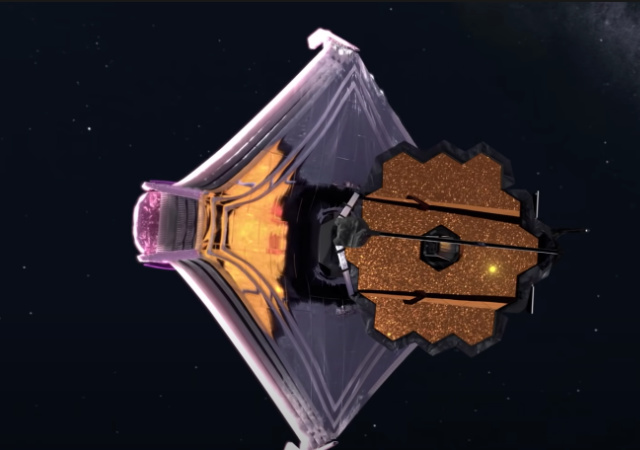James Webb Space Telescope Captures Evidence of Carbon Dioxide on Exoplanet

There has been another astonishing discovery made by the James Webb Space Telescope. It captured the first clear evidence of carbon dioxide in the atmosphere of a planet outside of the solar system.
The exoplanet, WASP-39 b, is a hot gas giant with a mass about a quarter that of Jupiter orbiting a Sun-like star 700 light-years away from Earth and the discovery of carbon dioxide which NASA said indicates the Webb telescope may be able to detect and measure carbon dioxide in thin atmospheres of smaller rocky planets.”Detecting such a clear signal of carbon dioxide on WASP-39 b bodes well for the detection of atmospheres on smaller, terrestrial-sized planets,” said Natalie Batalha of the University of California at Santa Cruz, who led the research team.The team used Webb’s Near-Infrared Spectrograph, or NIRSPec, to observe the exoplanet as part of a larger investigation including observations of two other transiting planets.
It is hoped that the discovery helps expand insights into how planets form.
“Carbon dioxide molecules are sensitive tracers of the story of planet formation,” said Mike Line, an associate professor in Arizona State University’s School of Earth and Space Exploration, in the news release. Line is a member of the JWST Transiting Exoplanet Community Early Release Science team, which conducted the investigation.The team made the carbon dioxide observation using the telescope’s Near-Infrared Spectrograph — one of Webb’s four scientific instruments — to observe WASP-39b’s atmosphere. Their research is part of the Early Release Science Program, an initiative designed to provide data from the telescope to the exoplanet research community as soon as possible, guiding further scientific study and discovery.This latest finding has been accepted for publication in the journal Nature.”By measuring this carbon dioxide feature, we can determine how much solid versus how much gaseous material was used to form this gas giant planet,” Line added. “In the coming decade, JWST will make this measurement for a variety of planets, providing insight into the details of how planets form and the uniqueness of our own solar system.”
No word of whether climate activists will glue themselves to artwork to protest CO2-caused global warming on WASP-39 b.
On a more serious note, another research team announced this week the discovery of a nearby “super-Earth” that could potentially support life, calling it a “water world.”
The team, led by the University of Montreal, used observations from NASA’s Transiting Exoplanet Survey Satellite (TESS), as well as telescopes on the ground, to detect the exoplanet, which is described as potentially rocky like Earth, but larger. Named TOI-1452 b, it orbits a red dwarf star about 100 light years away from our planet, which scientists say is “fairly close.”Scientists have long theorized the possibility of other ocean planets, but they have been difficult to confirm. TOI-1452 b is roughly 70% larger than Earth and about five times as massive, which would be consistent with having a very deep ocean — but more research is still needed.
CLICK HERE FOR FULL VERSION OF THIS STORY